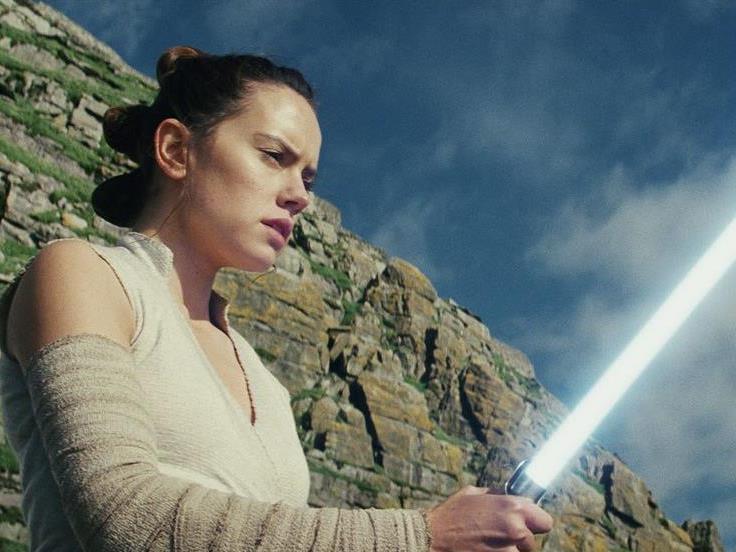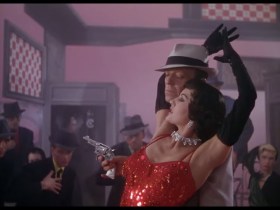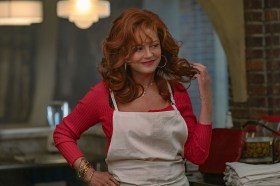In the Star Wars franchise, intergalactic frays come in shades of black, white, sand and grey, revelling in the hues of a conflict-wearied world. The dark sky proves a battleground, white-suited stormtroopers take orders from inky-clad evil leaders, and the forces of good are often found in desert-filled realms. Seen much less frequently is the colour that fights routinely bring, in a saga that doesn’t shy away from violent confrontations but rarely shows their bloody aftermath. And while that doesn’t change drastically in Star Wars: Episode VIII — The Last Jedi — a direct follow-up to 2015’s The Force Awakens, the eighth chapter in the series’ main sequence, and the ninth theatrical release after Rogue One: A Star Wars Story — crimson makes both a prominent appearance and a clear statement. It provides a vivid backdrop for hate-filled, power-hungry and war-mongering conversations, as well as an eye-catching accompaniment to a climatic last stand for survival, the latter strikingly contrasted against stark salt flats.
Rage, ire, passion, caution, pain, hurt, sacrifice: in the walls of Supreme Leader Snoke’s (Andy Serkis, War for the Planet of the Apes) chamber, and beneath the crystallised surface of the planet of Crait, all become evident in noticeable and purposeful splashes of red. And, in a feature both written and directed by Brick and Looper’s Rian Johnson, all drive a storyline that can’t ignore the darker side of fighting over the force. The Empire, Sith and now First Order’s nefarious ways may be well established across the franchise, but the cost of the Jedi, Rebellion and Resistance’s spirited opposition weights heavily upon The Last Jedi. The tragic consequences of hope, of rallying against oppression and of trying to forge a better future has always been a part of Star Wars’ story; however, the buoyant determination of George Lucas’ A New Hope forty years ago has now given way to a bleaker re-examination of what that dream has caused.
Here, while the redness lurking beneath fleshy bodies — whether they’re stuffed into black helmets, wielding lightsabers or hiding away in the furthest corners of the galaxy — remains unseen, even in combat, the reality that years of battling causes a mounting physical, emotional, spiritual and ideological toll does not. As Rogue One did before it, The Last Jedi surges forward an as ode to doing the right thing in tough circumstances and against overwhelming odds. Like The Empire Strikes Back before it too, it does so in a situation when the wrong side is making a comeback after a heavy defeat, leaving the champions of good trying to escape their destructive grasp.
General Leia Organa (Carrie Fisher, TV’s Catastrophe) still oversees the charge against Snoke, his flunky General Hux (Domhnall Gleeson, Goodbye Christopher Robin) and her son Ben turned aspiring dark lord Kylo Ren (Adam Driver, Logan Lucky), but it’s the force-attuned Rey (Daisy Ridley, Murder on the Orient Express), former stormtrooper turned ally Finn (John Boyega, Detroit) and ace pilot Poe Cameron (Oscar Isaac, Suburbicon) that truly lead it. After tracking down Luke Skywalker (Mark Hamill, Brigsby Bear) in The Force Awakens’ final frames, Rey finds him reluctant to teach her the Jedi ways — or to get involved in the Resistance’s troubles. Finn teams up with maintenance worker Rose (Kelly Marie Tran, XOXO) to try to shake the First Order’s light-speed tracking, enlisting the help of crafty codebreaker DJ (Benicio Del Toro, Sicario), while Poe faces off against new leader Vice Admiral Amilyn Holdo (Laura Dern, Twin Peaks), pitting action against evasion.
Narrative-wise, The Last Jedi doesn’t make much of a leap forward. Plus, with a JJ Abrams-directed Episode IX already confirmed, the scene is obviously set for their next, bigger, more definitive altercation. Indeed, the seemingly ceaseless nature of the Star Wars franchise from this point forward robs the film of some of its bigger drama — when a sequel, a new Johnson-guided trilogy and a Han Solo prequel are all already in the works, it’s hard not to notice that prolonging rather than resolving the story is the aim of the game — but where The Last Jedi shines is in the small touches that make a sizeable impact.
The colour red, and how aesthetically influential and meaningful it proves is one of them. The series’ commitment to diversity is another. Johnson’s visual flair, the resonant performances of his actors, some of the humour, and a number of striking altercations are others, as interspersed with dot-connecting, time-filling and formula-following, as expected with the movie’s oversized 152-minute running time. And yet, from its impressive inclusions emerges another truth that isn’t always shouted as the franchise soars on. Ren gives voice to it — “let the past die — kill it if you have to,” he exclaims — in a film aware that its previous success isn’t an assured path to its continued future.
What does Star Wars, as a collective of films and as an ongoing account of on-screen frays, bring from this point forward? It’s a question both Johnson and his characters ponder, and one that extends beyond larger ships, better-choreographed lightsaber duels and growing casts. And, as enjoyable as the adorable porgs, Chewbacca’s guttural growls, the Millennium Falcon’s jaunts and hearing C-3PO being told to shut up all are, it ranks alongside The Last Jedi’s deployment of symbolism-laden crimson as its most crucial element. With the story itself recognising the toll its in-narrative past has wrought, it’s hardly surprising that what comes next is just as pivotal a concern to Ren, Rey, Poe, Luke and company. Moving on from previous glories to start anew furnishes greater moments for the characters than the story, but it adds to a movie that’s thoughtful, emotional and contemplative even when it’s also somewhat bloated, clunky and treading water. And, one that knows that nostalgia can only go so far.
Rating: 3 stars out of 5
Star Wars: Episode VIII — The Last Jedi
Director: Rian Johnson
USA, 2017, 152 mins
Release date: December 15
Distributor: Disney
Rated: M
Actors:
Director:
Format:
Country:
Release:





